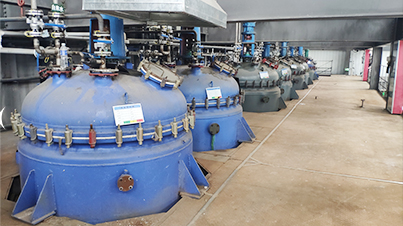polyhydric alcohol phosphate ester
Polyhydric Alcohol Phosphate Esters A Comprehensive Overview
Polyhydric alcohol phosphate esters are a fascinating class of compounds that bridge the gap between organic chemistry and various industrial applications. These compounds, which contain both polyhydric alcohol and phosphate functionalities, have gained attention due to their unique properties and versatility in a range of fields, including biochemistry, materials science, and pharmaceuticals.
What Are Polyhydric Alcohol Phosphate Esters?
Polyhydric alcohols, also known as polyols, are molecules with multiple hydroxyl (−OH) groups. Common examples include glycerol, mannitol, and sorbitol. When these alcohols react with phosphoric acid or its derivatives, they form phosphate esters. The resulting polyhydric alcohol phosphate esters typically possess a hydrophilic nature due to the presence of both phosphate and hydroxyl groups, which can readily interact with water and other polar substances.
Synthesis Methods
The synthesis of polyhydric alcohol phosphate esters can be achieved through various methods, including direct phosphorylation of the alcohols or via chemical modification of existing phosphate esters. One common method involves the reaction of glycerol with phosphoric acid to produce glycerol phosphate esters, which can have different degrees of phosphorylation depending on the reaction conditions. The choice of reactants and reaction conditions significantly influences the properties of the resulting esters, such as chain length, degree of substitution, and solubility.
Properties and Characteristics
Polyhydric alcohol phosphate esters exhibit a range of valuable properties due to their unique molecular structure. Their hydrophilic nature allows them to function as excellent emulsifiers and surfactants. This makes them particularly useful in formulations like detergents, cosmetics, and food products. Additionally, their ability to form stable complexes with metal ions enhances their applicability in catalysis and materials science.
Another intriguing characteristic of these compounds is their biocompatibility and biodegradability. Many polyhydric alcohol phosphate esters are non-toxic and are metabolized within biological systems, making them suitable candidates for pharmaceutical and biomedical applications. This biocompatibility has led to investigations into their use as drug delivery vehicles, wherein they can encapsulate therapeutic agents and release them in a controlled manner within the body.
Applications
polyhydric alcohol phosphate ester

The versatility of polyhydric alcohol phosphate esters translates into a broad spectrum of applications
1. Biomedical Applications The biocompatibility of these esters makes them ideal for use in drug delivery systems. They can be formulated into nanoparticles or liposomes to enhance the solubility and stability of hydrophobic drugs, facilitating targeted therapy.
2. Food Industry In the food sector, these compounds serve as emulsifiers and stabilizers, improving texture and consistency in products like sauces, dressings, and dairy items. By enhancing the dispersion of ingredients, they help achieve a palatable product.
3. Cosmetics and Personal Care Their emulsifying and moisturizing properties are leveraged in lotions, creams, and various cosmetic formulations. They assist in maintaining product stability and enhancing skin hydration.
4. Agriculture Polyhydric alcohol phosphate esters can also play a role in agriculture, particularly in formulating fertilizers and pesticides. Their surfactant properties can improve the spreading and adhesion of active ingredients on plant surfaces, enhancing efficacy.
5. Industrial Applications In materials science, these compounds are explored for their potential use in creating biodegradable plastics or as additives in polymer formulations to improve flexibility and durability.
Future Perspectives
As research continues, the prospects for polyhydric alcohol phosphate esters appear promising. Innovations in their synthesis and modification could lead to the development of new derivatives with enhanced functionalities tailored to specific applications. Moreover, as sustainability becomes increasingly important, the biodegradable nature of these compounds positions them as a key player in the transition towards eco-friendly materials.
In conclusion, polyhydric alcohol phosphate esters represent a complex but highly advantageous class of compounds with a myriad of valuable properties and applications. Their unique characteristics not only make them pivotal in current technological advancements but also highlight their significance in addressing future challenges in various fields, particularly in creating sustainable and effective solutions in bioengineering, food technology, and beyond.
-
Pbtc Scale InhibitorPBTC: A Scale Protector for Industrial Water TreatmentNewsAug.05,2025
-
Organic Phosphonate: An Efficient Defender in the Field of Scale InhibitionNewsAug.05,2025
-
Hydrolyzed Polymaleic Anhydride: Green Pioneer in Scale Inhibition FieldNewsAug.05,2025
-
PAPEMP Polyamino Polyether Methylene Phosphonic Acid For SaleNewsAug.05,2025
-
Flocculant Water Treatment: A Pioneer in Purification in the Field of Water TreatmentNewsAug.05,2025
-
Benzyl Isothiazolinone: An Efficient and Broad-Spectrum Antibacterial Protective GuardNewsAug.05,2025





